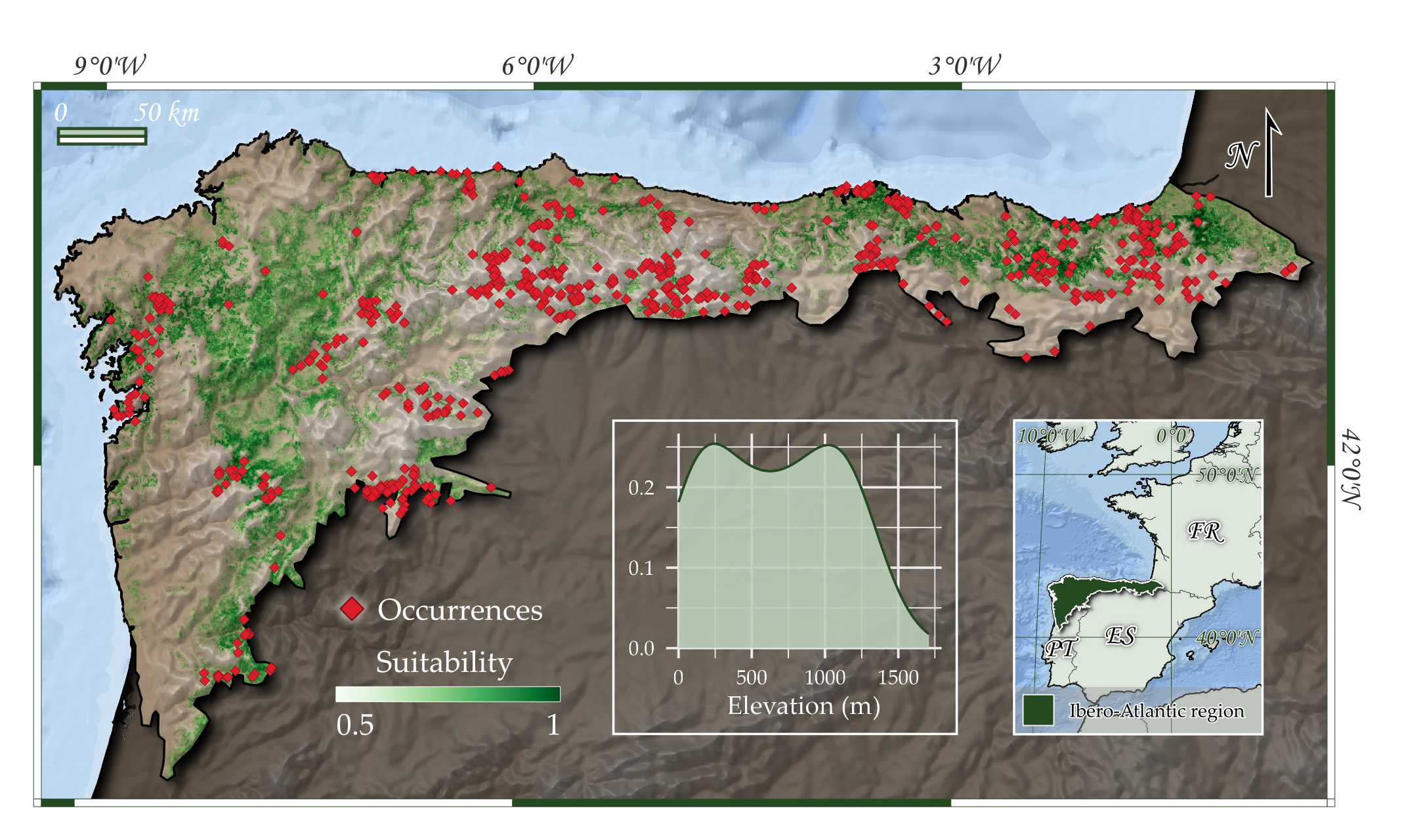R221 Atlantic hay meadows
Description
Mesophile hay meadows subjected to one or few cuts per year, with grazing absent or restricted to brief early-spring or late-autumn periods. Traditional practices based on low-intensity management maintain high-diversity communities dominated by grasses and mesophytic herbaceous species providing hay to feed the cattle in winter. Since the existence of a core of dominant species of tall grass across all the study area prevents the statistically sound recognition of, in particular, elevational variants like those distinguished by EUNIS as R22 and R23 (the latter including a specific unit for our area: R2314 [“Northern Iberian submontane hay meadows]), we lump all our hay meadows in a single level IV umbrella category, and choose R211 to name it for its evocative allusion to the Atlantic.
Floristic Composition
Frequent species
Indicator species
Regional distribution
